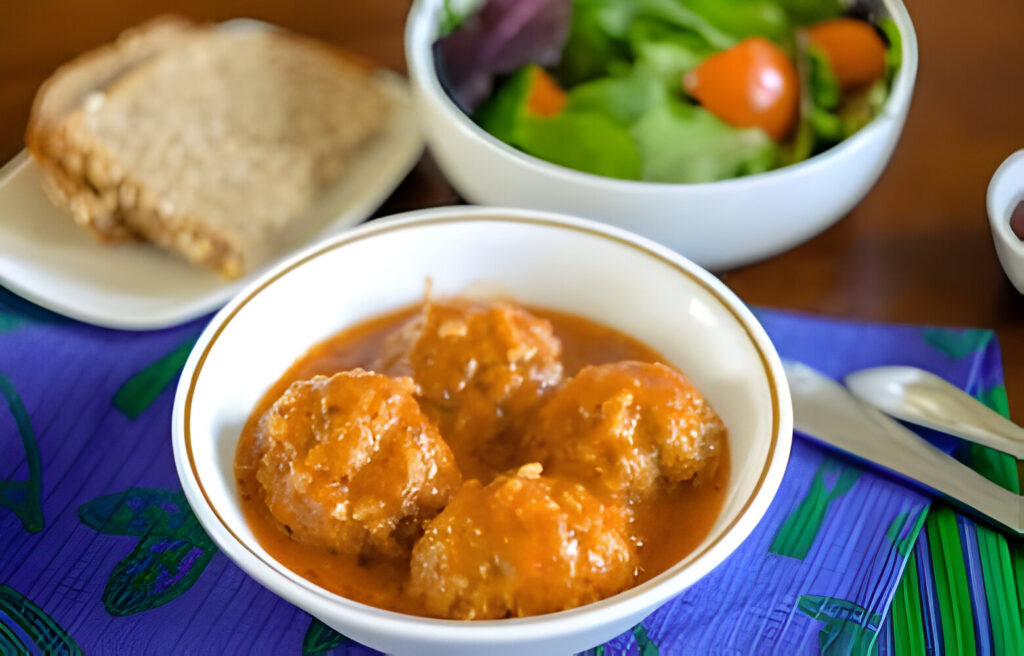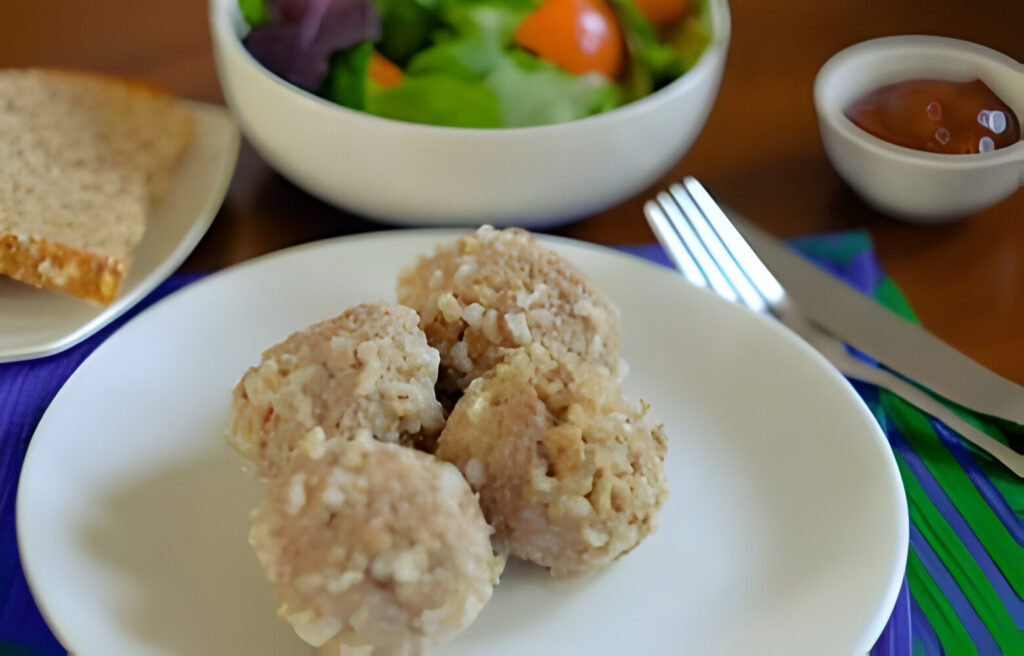
Introduction to Porcupine Soup
A Culinary Adventure
Embarking on a culinary journey often leads to the discovery of unique and intriguing dishes. Among these, porcupine soup stands out as a rare delicacy. This dish combines rich flavors and cultural significance, offering a taste of tradition and adventure. Porcupine soup, a cherished recipe in certain cultures, invites culinary enthusiasts to explore the wild side of cooking.
Cultural Significance
Porcupine soup carries a rich cultural heritage. In some communities, it symbolizes strength and survival, given the porcupine’s rugged nature. This dish transcends mere sustenance, embedding itself in the traditions of those who prize it for its nutritional and symbolic value. It bridges generations, preserving a link to a wilder, untamed world.
The Flavor Profile
For those unacquainted with porcupine meat, its flavor is a revelation. Comparable to other game meats, porcupine offers a tender and slightly gamey taste. When simmered into a soup, it releases deep, hearty flavors, creating a comforting and satisfying dish. The meat pairs well with robust herbs and spices, allowing for a soup that warms the soul and sparks curiosity.
Nutritional Value
Aside from its unique taste, porcupine meat is a nutritional powerhouse. It is lean, rich in protein, and contains essential minerals, making it a healthy addition to any diet. This aspect appeals to health-conscious individuals looking to diversify their protein sources.
An Invitation
Porcupine soup represents more than just a meal; it’s an invitation to explore diverse culinary practices. It encourages us to look beyond the ordinary, embracing dishes that carry a story. As we delve into this recipe, we not only nourish our bodies but also connect with the rich tapestry of global cuisine.
The History and Cultural Significance of Porcupine Soup
Tracing the Origins
The journey of porcupine soup begins deep in the forests and wildlands where these creatures roam. Historically, indigenous and local communities have hunted porcupine as a valuable food source. This practice laid the foundation for what would become a revered dish in certain cultures. The soup’s origins are as diverse as the regions it hails from, each adding its unique twist to the recipe.
A Symbol of Survival and Strength
In many cultures, porcupine soup symbolizes more than just sustenance. It embodies survival, resilience, and the ability to thrive in challenging environments. Consuming the soup often carries a sense of pride and respect for the natural world. It connects people to their ancestral hunting practices and the lessons learned from living closely with nature.
Cultural Celebrations and Rituals
Porcupine soup frequently graces tables during significant events and rituals. Its presence at celebrations underscores its importance within cultural traditions. In some societies, the dish is a centerpiece, signifying prosperity, health, and community bonding. Serving porcupine soup at gatherings reinforces social ties and honors the cultural heritage that cherishes this unique meal.
The Global Spread
While porcupine soup has its roots in specific regions, globalization has sparked curiosity and appreciation worldwide. Adventurous chefs and food enthusiasts have begun to explore and adapt this dish, integrating it into modern culinary experiences. This global journey highlights the soup’s versatility and its ability to bring people together, bridging cultural divides with every spoonful.
Conclusion: A Living Tradition
Porcupine soup, with its rich history and cultural significance, continues to captivate and inspire. It stands as a testament to humanity’s relationship with the natural world and the enduring power of culinary traditions. As we delve deeper into its story, we not only uncover the flavors of the past but also ensure that this unique dish remains a part of our global heritage.
Preparing Porcupine Meat: Tips and Techniques
Ethical Sourcing and Safety
When embarking on the preparation of porcupine soup, the first step is sourcing the meat ethically and safely. It’s crucial to adhere to local wildlife regulations and sustainable hunting practices. For those in regions where porcupine is not commonly available, specialty meat suppliers or international markets may offer a legal and ethical source. Always prioritize safety, ensuring the meat undergoes proper inspection and handling to prevent health risks.
Cleaning and Preparation
Preparing porcupine meat for cooking is a meticulous process. Begin by wearing protective gloves to handle the quills safely. Removing the quills and skin requires patience and precision. Once skinned, it’s essential to clean the meat thoroughly under cold water. Then, cut it into manageable pieces, removing any fat or tendons. This step ensures that the meat cooks evenly and absorbs the flavors of the soup.
Marinating for Flavor
Marinating plays a pivotal role in enhancing the flavor of porcupine meat. A blend of herbs, spices, and acidic components like vinegar or citrus juice can tenderize and infuse the meat with depth and richness. Allow the meat to marinate for several hours or overnight in the refrigerator to maximize flavor penetration.
Cooking Techniques
Slow cooking is the key to unlocking the tenderness of porcupine meat. A low and slow simmer in a pot allows the fibers to break down, resulting in melt-in-your-mouth texture. This method also ensures that the flavors meld beautifully, creating a harmonious and savory soup. Patience during this step rewards you with a dish that’s both comforting and flavorsome.
Conclusion: Mastery and Respect
Mastering the preparation of porcupine meat for soup requires respect for the ingredient and the process. By following these steps, cooks can honor the cultural significance of the dish while ensuring a delicious outcome. This journey from sourcing to serving not only enhances culinary skills but also deepens appreciation for the traditions behind porcupine soup.
Porcupine Soup Recipe: Ingredients and Step-by-Step Instructions
Gathering Your Ingredients
A delectable porcupine soup begins with a carefully selected array of ingredients. You’ll need:
- 2 pounds of porcupine meat, cleaned and prepared
- 1 large onion, chopped
- 2 carrots, diced
- 3 celery stalks, diced
- 4 garlic cloves, minced
- 1 teaspoon of salt
- 1/2 teaspoon of black pepper
- 2 bay leaves
- 1 teaspoon of thyme
- 6 cups of beef or vegetable broth
- 2 tablespoons of olive oil
- Fresh parsley for garnish
Preparing Your Soup
Follow these steps to create a savory porcupine soup that captivates with every spoonful.
Step 1: Brown the Meat
Heat the olive oil in a large pot over medium heat. Add the porcupine meat, browning it on all sides. This step locks in flavors.
Step 2: Sauté the Vegetables
Remove the meat and set it aside. In the same pot, add the onion, carrots, celery, and garlic. Sauté until they start to soften.
Step 3: Simmer the Soup
Return the meat to the pot. Add the broth, salt, pepper, bay leaves, and thyme. Bring to a boil, then reduce to a simmer. Cover and let it cook for 2-3 hours until the meat is tender.
Step 4: Final Touches
Once the meat is tender, remove the bay leaves. Adjust seasoning to taste. Ladle the soup into bowls.
Step 5: Garnish and Serve
Garnish each bowl with fresh parsley. Serve hot, offering a hearty and comforting dish.
Conclusion: A Culinary Masterpiece
This porcupine soup recipe brings together rich flavors and tender meat in a dish that’s sure to impress. Each step, from browning the meat to simmering the broth, builds layers of depth in this traditional soup. By following these instructions, you create more than just a meal; you craft an experience that honors the culinary heritage behind porcupine soup.

Serving and Pairing Suggestions for Porcupine Soup
The Art of Presentation
Serving porcupine soup elegantly elevates the dining experience. Opt for deep, wide bowls to showcase the soup’s rich color and texture. A ladle of soup, garnished with fresh parsley or a sprig of thyme, adds a touch of freshness and color. For a rustic appeal, consider serving the soup in clay or earthenware bowls, echoing the dish’s traditional roots.
Complementary Side Dishes
Porcupine soup, with its hearty and robust flavors, pairs well with simple, comforting side dishes. A crusty loaf of bread or a basket of warm rolls is perfect for dipping and soaking up the flavorful broth. A light, crisp salad dressed with a vinaigrette balances the richness of the soup, refreshing the palate. For a more substantial meal, serve alongside a simple quinoa or rice pilaf.
Beverage Pairings
The right beverage can enhance the soup’s complex flavors. For wine enthusiasts, a medium-bodied red wine such as a Merlot or a Pinot Noir complements the gamey notes of the meat without overwhelming it. Beer lovers might enjoy a dark, malty ale that echoes the soup’s richness. For a non-alcoholic option, a sparkling apple cider or a robust black tea offers a refreshing counterpoint to the soup’s savory depth.
Conclusion: Crafting the Perfect Meal
Serving porcupine soup is about creating a memorable dining experience. From the presentation to the pairing, each element should complement and enhance the flavors of the soup. By following these suggestions, you transform a simple meal into a culinary event, inviting diners to savor each bite and appreciate the tradition and craftsmanship behind porcupine soup.
Frequently Asked Questions About Porcupine Soup
Where Can I Buy Porcupine Meat?
Finding porcupine meat can be a challenge, as it is not commonly available in standard grocery stores. Start by inquiring at local butchers or stores specializing in game meat. Online specialty retailers also offer a range of game meats and may be able to ship porcupine meat directly to you. Ensure the source is reputable and adheres to legal and ethical hunting practices.
Is Porcupine Meat Safe to Eat?
Yes, porcupine meat is safe to eat when sourced responsibly and prepared correctly. Like any game meat, it should be thoroughly cooked to ensure all potential pathogens are destroyed. Always handle and cook the meat according to food safety guidelines to prevent any health risks.
Can I Substitute Porcupine Meat With Another Type of Meat?
Absolutely. If porcupine meat is not available, rabbit or dark turkey meat makes excellent substitutes. Both alternatives offer a similar texture and can absorb the flavors of the soup well, making your dish just as delicious.
How Long Does It Take to Cook Porcupine Soup?
The cooking time for porcupine soup can vary, but generally, it involves a slow cooking process. Expect to simmer the soup for 2-3 hours to ensure the meat is tender and the flavors are well developed. The key is patience; slow cooking will yield a more flavorful and tender dish.
What Are the Best Seasonings for Porcupine Soup?
Porcupine meat pairs well with robust herbs and spices. Thyme, bay leaves, salt, and pepper are essentials. Feel free to experiment with other herbs like rosemary or oregano to suit your taste. The goal is to complement the meat’s natural flavors without overwhelming them.
How Can I Thicken Porcupine Soup?
If you prefer a thicker soup, consider adding a small amount of flour or cornstarch mixed with water to the broth. Add this mixture gradually, stirring constantly, until you reach the desired consistency. Another option is to puree some of the vegetables in the soup and stir them back in for a natural thickener.
Can Porcupine Soup Be Frozen for Later Use?
Yes, porcupine soup freezes well. Allow the soup to cool completely before transferring it to airtight containers. It can be stored in the freezer for up to 3 months. Thaw in the refrigerator overnight and reheat gently on the stove, adding a little extra broth or water if needed.
By addressing these frequently asked questions, we aim to make the process of preparing and enjoying porcupine soup as accessible and enjoyable as possible. Whether you’re a seasoned chef or a curious home cook, these tips and insights can help you navigate the culinary adventure that is porcupine soup.
Related Articles :